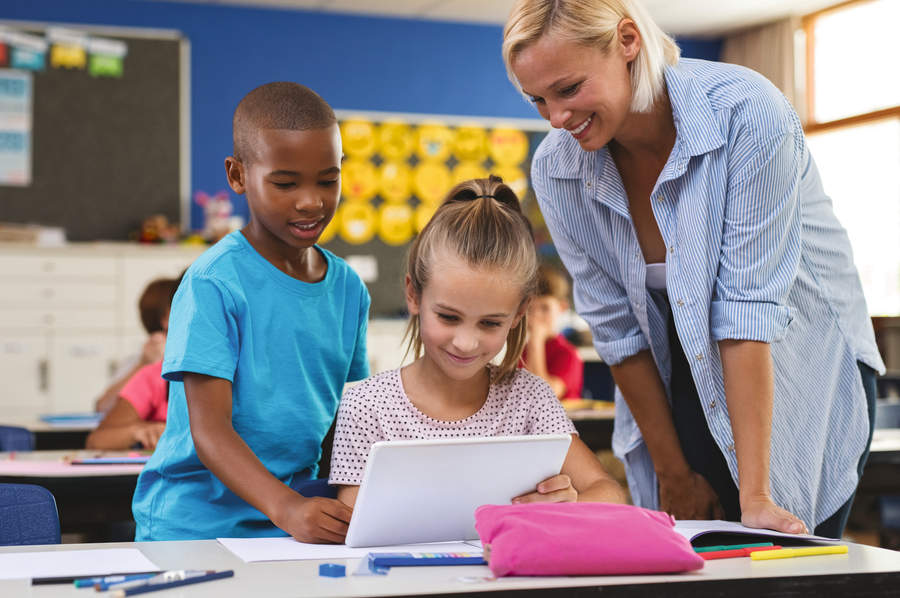Post-Pandemic Teaching: 5 Things to Remember
What to consider in your post-pandemic teaching approach

While we are more than two years removed from the height of the COVID-19 pandemic, teaching and learning are forever changed. And, that is OK.
Yes, the pandemic caused a rush to remote and online teaching that many of us were not prepared for. However, at the same time, it necessitated that we be flexible, creative, and explore pedagogical techniques that we would not previously engaged with or prioritized.
Now that we’re moving into post-pandemic teaching, educators need to remember certain things for their instructional approach.
1. Post-Pandemic Teaching: Be Flexible
One thing that the pandemic has taught us that we must always remember is flexibility. The lesson may not always go as intended, students may not connect with learning activities as you had hoped, and assessment scores may not indicate the level of growth you know your students are capable of. However, we must always remember to be flexible, patient, and allow mistakes. When students know that their teacher is flexible, they can work without pressure and the risk of stifling their creativity is minimized.
2. Be Ready to Pivot
Related to but different from being flexible is being able to pivot at any time. Similar
to how we had to pivot to remote and online learning during the pandemic, we must be prepared and ready to pivot again.
For example, your school may need to pivot from remote to virtual learning, or pivot from traditional instruction to teaching to support learning loss. For some, we may need to pivot back to in-person instruction and/or dual audience learning, from fully online learning. Whatever your transition is, remember to be ready to pivot with the same goal of supporting student learning.
Tech & Learning Newsletter
Tools and ideas to transform education. Sign up below.
3. Humanize Learning
As educators, we know that learning should be student-centered and personalized to meet the individual needs of each student. At the same time, we cannot ignore the persistent trauma many of our students have faced as a result of the COVID-19 pandemic, which has impacted them in many ways.
As you go about planning lessons and teaching, be sure to humanize instruction and make time for reflection and mindfulness, creating space for students to bring their whole selves to the classroom. Connect students to other resources and educators such as school counselors and social workers who can also support healing and restoration post-pandemic.
4. Integrate Culturally Responsive Practices
Culturally responsive teaching connects with the dimensions of digital equity that we could also continue to keep at the forefront. Racial trauma has still impacted many students, and teachers are starting spend more time integrating anti-racist teaching practice into their work.
Start with a culturally responsive mindset, and remember to continue to acknowledge and reflect on your own implicit biases that you may be bringing into your work as a teacher. Evaluate your lessons and make sure that students’ cultural and linguistic heritages are represented in content and learning activities.
5. Leverage Edtech Tools
Edtech tools were already being used widely before the pandemic. What changed was how we used edtech, who uses it, and the availability of many options.
Edtech tools are interesting on their own, however, when used to carry out learning objectives within a lesson plan, these become pedagogically useful, can help teachers save time with grading, and can engage and excite students in the learning process.
Use these lesson plans to get started with a wide variety of edtech tools such as Flip, Padlet, and Storybird. Do not be nervous to use gaming-based edtech tools such as Minecraft and Roblox for your lessons too! If you feel like you are learning on the job using edtech tools, consider training to become a Google Certified Educator.
By being flexible and ready to pivot instruction while also humanizing learning experiences, integrating culturally responsiveness, and leveraging edtech tools, teachers will be able to help students continue to learn, develop, and grow in a post-pandemic world that supports them academically, socially, and personally.
Dr. Stephanie Smith Budhai is faculty member in the College of Education and Human Development at the University of Delaware, focusing on Educational Technology, Learning Design, and Justice-centered Pedagogies. She holds two national education technology leadership positions on the Information Technology Council and as Chair of the Culture and Climate Committee for the Society for Information Technology and Teacher Education (SITE). She holds a Ph.D. in Learning Technologies, and a M.S. in Information with a specialization in Library and Information Science, and K-12 teaching certifications in Technology Education, Instructional Technology and Business, Computers, Information Technology, Special Education and Elementary Education. Dr. Smith Budhai is the 2021 SITE Emerging Leader and the 2017 ISTE Awardee for Excellence in Teacher Education. She is also a Nearpod, and VoiceThread Certified Educator. Dr. Smith Budhai has more than a decade of online teaching experience, and has published myriad books (two have been translated into Arabic), articles, and invited editorials surrounding the use of technology and online learning in education. A few of her book publications include:
- Leveraging Digital Tools to Assess Student Learning
- Increasing Engagement in Online Learning: Quick Reference Guide
- Teaching the 4Cs with Technology
- Best Practices in Engaging Online Learners through Active and Experiential Learning Strategies
- Nurturing Young Innovators: Cultivating Creativity in the Classroom, Home and Community
